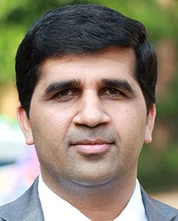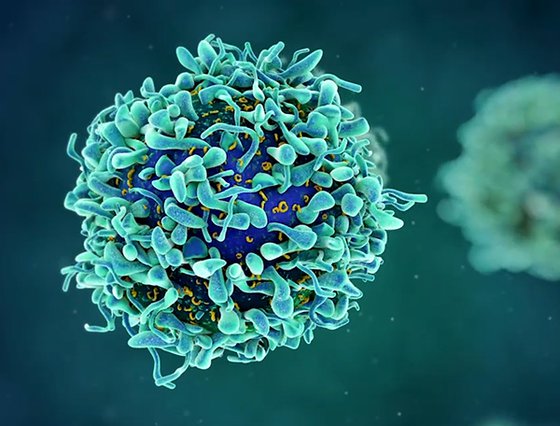


Indigenous residents of Guam and two other Pacific locales are prone to familial neurodegeneration that manifests as atypical Parkinsonism, motor neuron disease, dementia, or a combination thereof.
This progressive and fatal disease, known as Guam Parkinsonism-Dementia (Guam PD), is associated closely with universal tauopathies, including Alzheimer's disease, progressive supranuclear palsy, and amyotrophic lateral sclerosis.

Muralidhar L. Hegde, PhD
Houston Methodist researcher Muralidhar L. Hegde, PhD, Everett E. and Randee K. Bernal Centennial Chair for the Neurological Institute, leads research focused on delineating the molecular mechanisms underlying neurodegenerative diseases. In a recent study published in the Nature journal Cell Death & Disease, the team reports how toxic protein clumps might be damaging brain cells in Parkinson’s disease (PD) and how existing cancer drugs and supplements could offer hope for new treatments.
TOM40 Protein
In PD, the TOM40 protein, a key component of the outer mitochondrial membrane (OMM), is linked to α-synuclein (α-Syn) pathology, and Hegde’s team discovered that TOM40 protein depletion occurs in the brains of patients with Guam PD as well as in cultured neurons expressing α-Syn proteinopathy; a depletion that occurs without corresponding changes in TOM40 mRNA levels. The study reveals that aggregates of α-synuclein can damage neuronal mitochondria by breaking down their TOM40, impacting mitochondrial function and leading to problems with energy production related to Guam PD.
Their comprehensive analyses demonstrate that mutant α-Syn-induced loss of TOM40 results in reduced mitochondrial membrane potential, accumulation of mtDNA damage, deletion and insertion mutations, and altered oxygen consumption rates. Importantly, they also show that ectopic supplementation of TOM40 or reducing pathological forms of α-Syn ameliorated these mitochondrial defects, suggesting potential therapeutic avenues.



Specifically, the researchers are looking at two potential therapeutics—TOM40 supplements to restore mitochondrial function and PARP inhibitors, a type of drug already used in breast and ovarian cancer treatment—that could help protect brain cells.
“Our results improve the understanding of Parkinson’s disease and will advance development of targeted therapies,” said Hegde.
Hegde’s collaborators on this study were Velmarini Vasquez, Manohar Kodavati, Joy Mitra, Indira Vedula, Dale J. Hamilton, Ralph M. Garruto and K. S. Rao, and the project was primarily supported by the Sherman Foundation Parkinson’s Disease Research Challenge Fund, with partial support from the NIH’s National Institute of Neurological Disorders and Stroke and National Institute of Aging (award number RF1NS112719).
Heather Lander, PhD
April 2025
Related Articles









